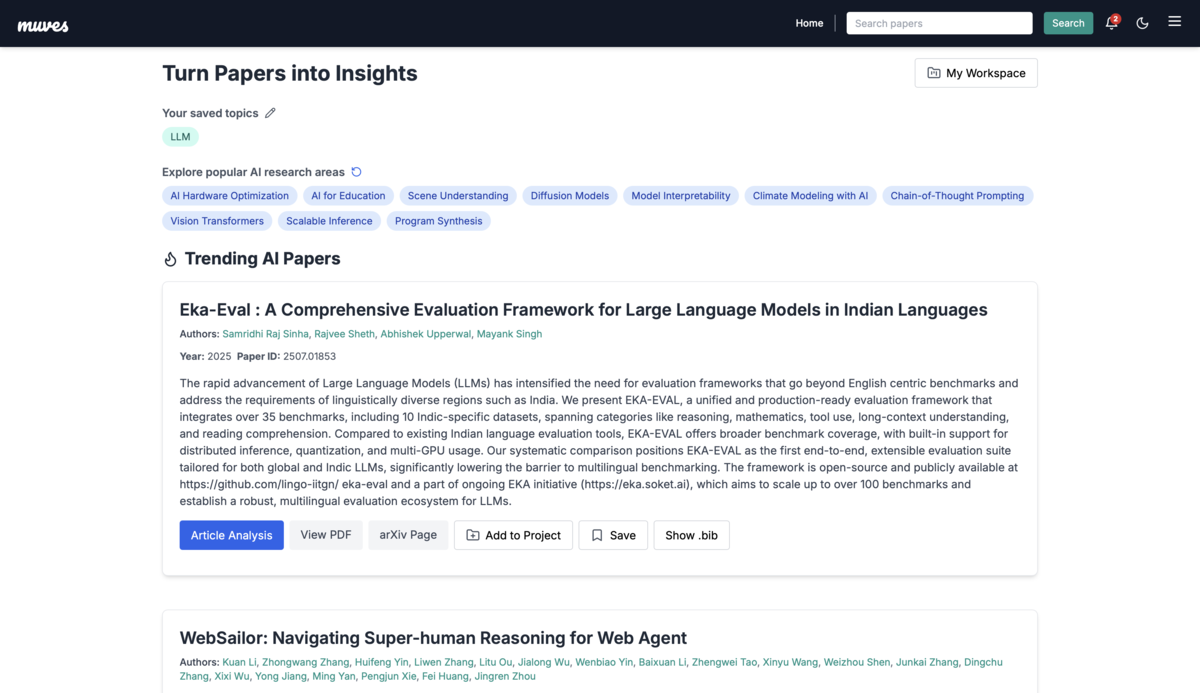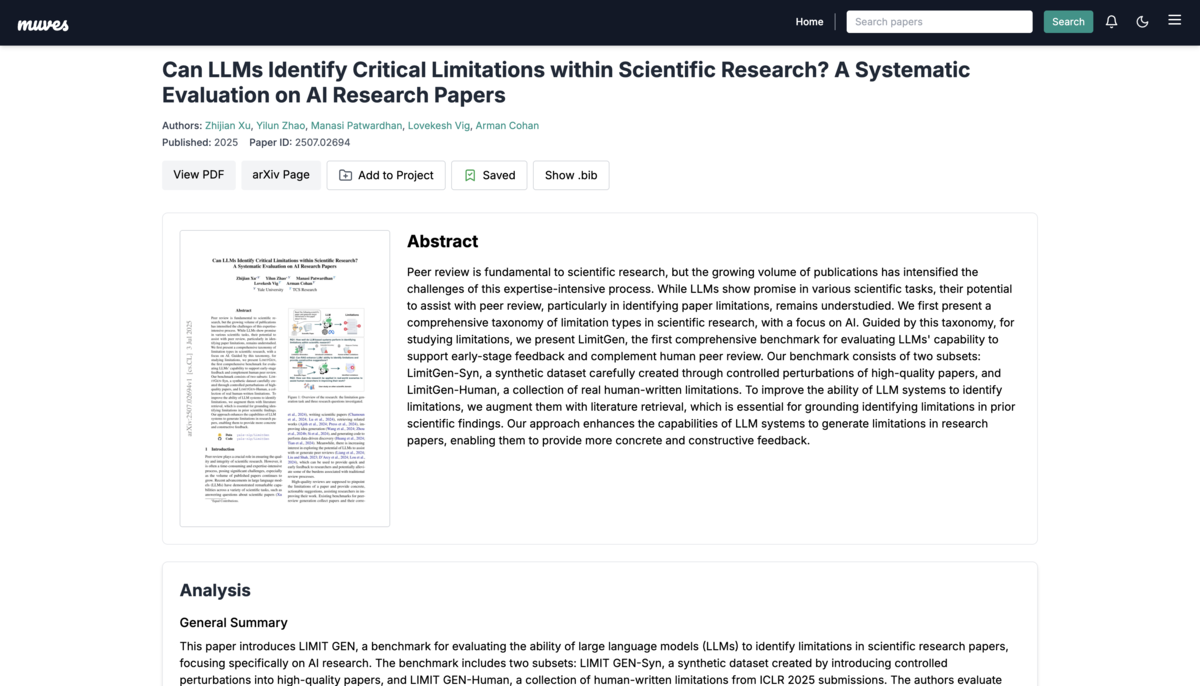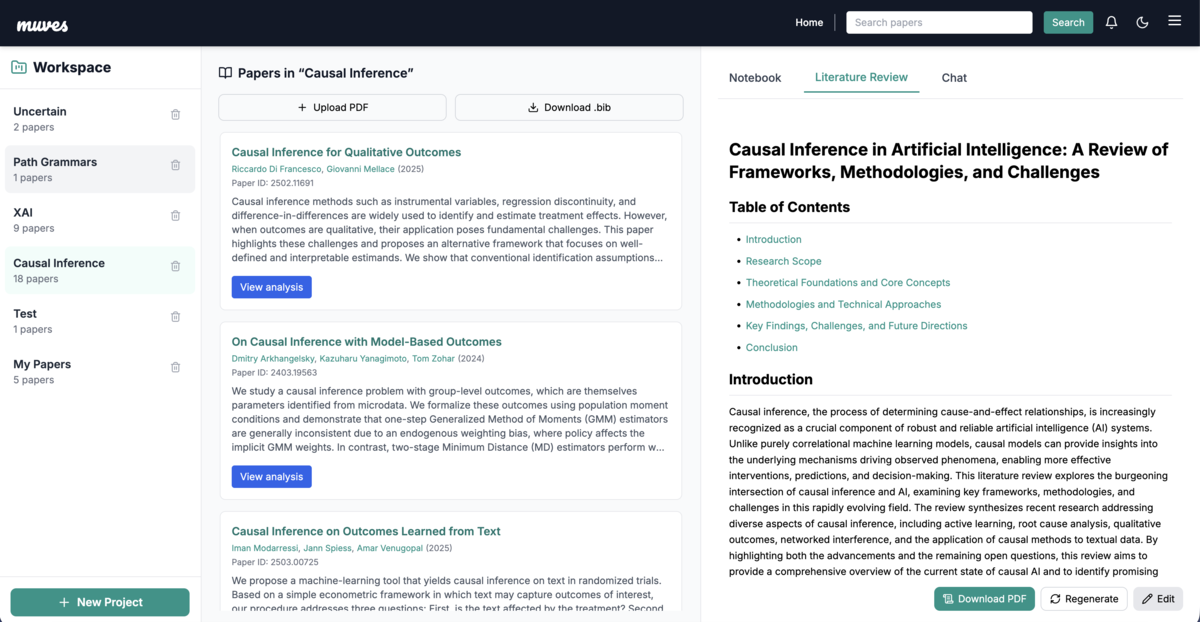Building an AI Research Assistant Platform
The volume of AI research is growing exponentially. ArXiv alone publishes hundreds of new papers every day, making it nearly impossible for researchers, students, and practitioners to stay current with meaningful developments in their areas of interest.
This information overload problem led us (together with Dmitry Kan and Stergios Chatzikyriakidis) to build Muves Papers - a platform that helps people discover, organize, and understand AI research papers more effectively.
The Problem We're Solving
Staying current with AI research has become a significant challenge, even for experts in the field. The traditional approach of manually scanning through paper titles, abstracts, and skimming content simply doesn't scale when you're dealing with hundreds of new publications per week.
Researchers face several specific pain points:
Information Overload: Too many papers to review manually, making it easy to miss important developments.
Organisation Challenges: Difficulty organising and categorising papers by project or research area.
Comprehension Barriers: Complex papers with dense technical content that require significant time investment to understand.
Context Loss: Hard to see connections between papers or track how ideas evolve across multiple publications.
Our Approach
Muves addresses these challenges through a combination of AI-powered analysis and smart organisation tools. Muves Papers is an AI-powered research platform designed to help researchers, students, and practitioners navigate the overwhelming volume of AI literature. Instead of manually sifting through hundreds of papers, users can discover trending research, organise papers into focused projects, and leverage AI agents to analyse content and generate insights. The platform transforms the traditional research workflow from time-consuming manual processes into an efficient, AI-assisted experience.

The Platform
The platform is built around five core features:
Paper Analysis

Individual papers get processed through our analysis agent, which breaks down complex research into structured insights. The system extracts key findings, methodology, and significance, making it much faster to understand what a paper contributes and whether it's relevant to your work.
Topic Search and Discovery

Users can explore research areas through our topic search feature, which provides AI-generated overviews of complex domains. This helps researchers quickly get up to speed on unfamiliar areas or understand how different concepts relate to each other.
Project-Based Organisation

The platform allows users to organise papers into focused projects, keeping related research together. This project-based approach makes it much easier to build comprehensive understanding around specific research questions or areas of interest.
Automated Literature Reviews

Once you've collected papers in a project, our Research Assistant can automatically generate structured literature reviews. This saves significant time compared to manually synthesising information across multiple papers and helps identify patterns and gaps in the research.
Chat with Project Papers
The Research Assistant provides conversational access to your paper collections. You can ask questions about specific papers, request summaries of key concepts, or explore connections between different pieces of research - all scoped to the papers you've actually added to your project.
Technical Architecture
Muves is built on a modern web stack with several specialised AI agents:
Paper Analysis Agent: Processes individual papers to extract key insights, methodology, and significance.
Topic Summarisation Agent: Creates structured overviews of research areas and emerging trends.
Research Assistant Agent: Provides conversational access to paper collections and generates literature reviews.
Discovery Engine: Surfaces trending and relevant papers based on community signals and research impact.
The platform integrates with multiple data sources including ArXiv, academic databases, and research community signals to provide comprehensive coverage of the AI research landscape.
Current Status and Learning
We soft-launched Muves earlier this year and have been iterating based on user feedback from researchers and practitioners. The platform currently helps users track thousands of papers across different AI domains. We're currently supported by Google Cloud credits, which allows us to keep the platform operational while we explore sustainable funding models for long-term growth.
Some key insights we've learned:
Project-based organisation is crucial - Users need to group papers by their specific research interests rather than broad categories.
AI assistance works best when scoped - Rather than trying to answer questions about all research, focusing the AI on specific paper collections provides more accurate and useful responses.
Context matters more than completeness - Users prefer curated, relevant content over comprehensive but noisy feeds.
Literature reviews save significant time - Automated synthesis of project papers into structured reviews has been one of the most valuable features for users.
What's Next
We're continuing to develop Muves based on how researchers actually work with literature. Upcoming features include better collaboration tools for research teams, more sophisticated trend analysis, and enhanced integration with reference managers and note-taking workflows.
The goal remains the same: making it easier for people to stay current with AI research without being overwhelmed by the volume of new information.
If you're interested in trying Muves, you can check it out at papers.muves.io. We're always looking for feedback from researchers and practitioners who deal with the challenge of staying current in fast-moving fields.
Muves is developed by myself along with Dmitry Kan and Stergios Chatzikyriakidis, combining our experience in AI research, search technologies, and natural language processing.